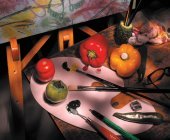|
Blur of ImageBlur is a lens incapability to produce a sharp image. This can be a manufacturing defect, or a design fault, but the quality of photograph is not acceptable. This de-focusing should not be confused with an intentional effect of slightly out of focus photograph. It should also not be confused with the result, which has lack of depth of field or a soft focus filter used on the lens. There are some point, where we have to keep the image slightly out of focus to give an artistic look. This is mostly done in flower, baby and child photography. However, when a lens by itself cannot give a sharp image, then there is an issue.
Even if a lens is of good quality and well designed, it can have this type of fault as a manufacturing defect. This means that other lens of the same brand (and model) may give a perfectly sharp image. This could be a defect in lens assembly process or a result of bad handling of the lens.
A sharp image should show full texture detail of the subject. If there is any defect in the focusing, (or focusing mechanism), fine details will be lost. Contrast also will be less because of this fault. Photographs shot at f 8 and f 11 will look sharpest, however, photographs shot at f 2.8 or f 4 also should be sharp at one point. Shallow depth of field will defocus some part of the image, which must be taken into consideration.
Whenever you buy a new lens, test it for its sharpness and blur. Mount the camera on good sturdy tripod and shoot a subject, which is about ten feet away. Select a subject like cloth or pot, which is not very smooth. Use a spot light at an angle. Shoot pictures at all aperture settings available on the lens and then check the result on the computer screen at 400x zoom level. Photographs shot at f 22 and f 32 may not be as sharp as the one at f 11 or f 16. This is not the lens fault of blur, but it is diffraction of the lens, which is yet another fault by itself. Read about these lens faults in detail: Chromatic aberration: How chromatic aberration or distortion affects the image quality Diffraction: Scattering of light causing diffraction in an image Field curvature: Field curvature aberration of a lens
Lens flare: How to take care of a lens flare Loss of contrast: How ability of capturing contrast of a lens is lost
Optical distortion: Physics of optical distortion and how to check it Spherical aberration: Optics of spherical and asherical lens
Return back to camera lens from blur
|






